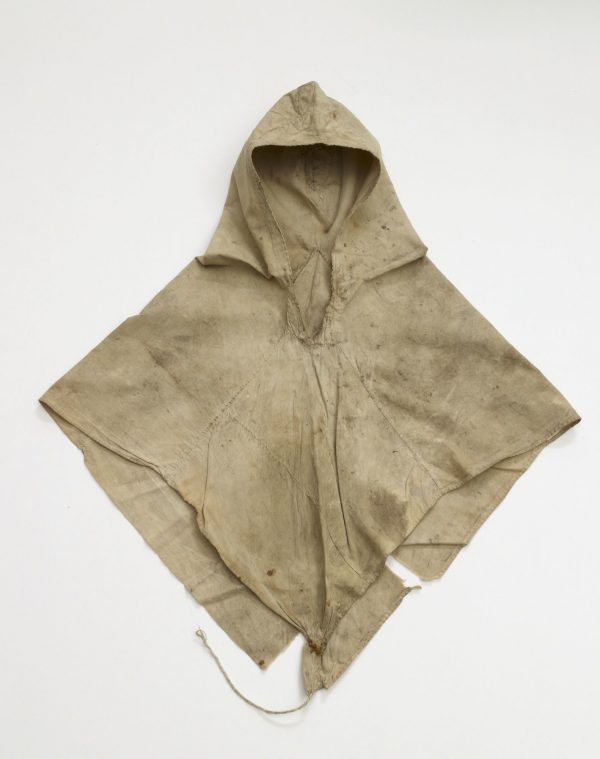Carl Harlund’s wooden calendar
Artefact of the month – January 2020
Preserved in the ethnological collection, the small and modest calendar – basically just a little piece of wood – does not really catch the eye as an object, but the person who made it was very interesting.
The calendar was made by Carl Harlund (locally called Haarlunti), who was born into a bourgeois home in Uusikaupunki in 1739, took the matriculation examination and then continued his studies at the Royal Academy of Turku. He was elected as the magistrate of Uusikaupunki in 1771 but, for an unknown reason, refused the job before his post was confirmed. After this, he is known to have travelled in Stockholm, Luleå, Vaasa and Ostrobothnia. In the records of the Parish of Ikaalinen, it is mentioned that Harlund moved away “to travel the world”. According to folk memory, he also studied in Germany but had to quit his studies “because he could not take it mentally”. He spoke eight languages and understood twelve.
There is not much written information available about Harlund’s life but, according to lore, he became an assistant surveyor in Karvia for the general parcelling out of land in 1783–1787. In addition, he dug ditches and hoed fields. In his later years, he is said to have been an eccentric folk philosopher and foreteller. He lived in Karvia for the rest of his life and died in poverty “of weakness due to old age” in 1816.
The calendar was delivered to the museum’s collections in 1885 by W. Ingman, the curate of Karvia. It had been left in Harlund’s last place of residence, the Hormaluoma house in the village of Sarankylä in Karvia. The calendar is thin, about 12 cm long, and has been inscribed with signs and numbers. The markings have been carved in six two-part rows on both sides of the object.
Used for foretelling even in ancient cultures, calendars were subject to many beliefs and customs. They were used not only to follow the passage of time but also to predict the future. Harlund predicted many things that became reality much later:
– There will be speech lines like cobwebs along roads. One man will stand on one side of the world and another on the other side, and they will talk to each other.
– People will ride headless horses on the road. There will be iron roads on which headless horses pull loads.
– Light will hang from a line.
– Finland will only need one pastor, and people can lie in bed at home listening to him.
– Scythes will eventually not be needed because crops will be cut by machines.
– There will be a great war. It will be fought in the air, on the ground, on water and under water.
A person from Karvia described Harlund: “He was a man who knew things beforehand, and everything he predicted has now come true.”
Harlund also made calendar markings in the wall of an outbuilding at his last place of residence. What he carved there was a “philosopher’s calendar” that begins from the summer solstice of 1800. The markings continue for 16 years, almost until his death. They are similar to those in the museum’s calendar.
Docent Paul Kustaanheimo studied the calendar markings and wrote:
"It seems that Harlund was not satisfied with the regular calendar, since he began a new chronology, numbering his years (Or = dr) starting from l, using the Midsummer of 1800 as the zero point (probably). A new year begins when the Sun moves into Cancer, on 22 June. The months are marked with the zodiac signs, and the date apparently indicates how many days (i.e. how many degrees) the Sun has been in the sign. The final marking, 21 Leo or 16, corresponded to the regular date of 13 August 1815-------."
I asked my colleague, keeper Heli Lahdentausta, to study the wall markings made in 1809, at the time of the Finnish War. She studied the degrees of the zodiac signs to specify the dates that Harlund had marked that year: 5 January, 7 February, 28 July, 7 September, 10 October, 10 November, 26 November and 22 December.
Back in his day, Kustaanheimo considered it impossible to know what had happened on the marked dates. “The markings may refer to events in the creator’s private life, important local events, agricultural matters or weather observations.”
The artefact is not currently displayed.
Sari Tauriainen
Sources:
Eino Saari, 1977. Entinen Karvia. 3 osa. Karvian kotiseutuyhdistys ry.
Oral information:
Heli Lahdentausta, Keeper, National Museum of Finland.



-
2024
-
2023
-
2022
-
2021
-
2020
-
 Maternity package for undocumented migrants
Maternity package for undocumented migrants
-
 Chilkat blanket
Chilkat blanket
-
 A box of sacramental bread
A box of sacramental bread
-
 Tar steamer model
Tar steamer model
-
 A holy family from the court of Prague?
A holy family from the court of Prague?
-
 Mosquito hood from East Karelia
Mosquito hood from East Karelia
-
 Seedlip (kylvövakka)
Seedlip (kylvövakka)
-
 A box of ‘citizens’ pastries’
A box of ‘citizens’ pastries’
-
 Oak night-box (nattlåda)
Oak night-box (nattlåda)
-
 Silver coin hoard from Vieki
Silver coin hoard from Vieki
-
 Two mermaids
Two mermaids
-
 Carl Harlund’s wooden calendar
Carl Harlund’s wooden calendar
-
-
2019
-
2018